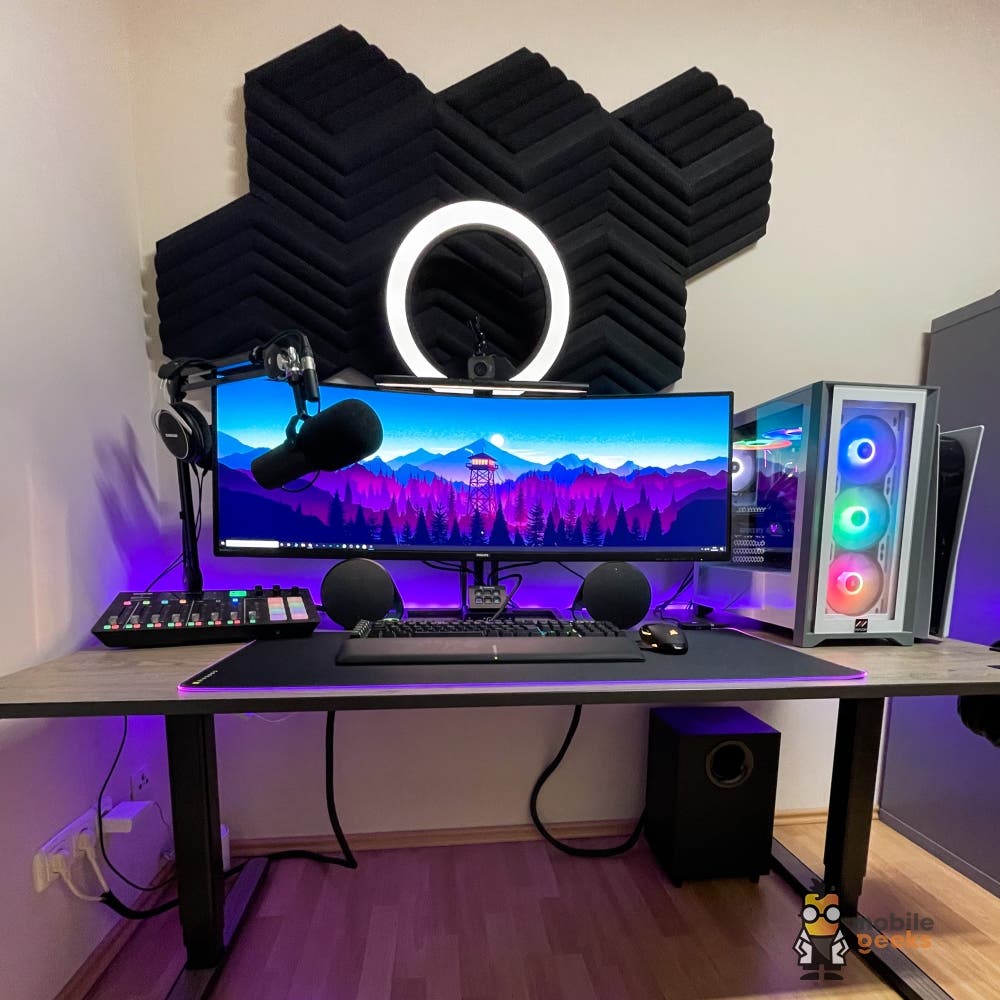Elgato Wave Panels – sound insulation for better room acoustics
People who work a lot with sound, be it currently for video calls, live streams, videos, music production etc., usually have the problem that they have the right equipment, but the next podcast still has to be recorded in the closet, because the own room acoustics change not suitable because of reverberation or echo. It looks similar with an expensive audio system that cannot fully develop its potential. This is particularly noticeable if you are sitting in a room that is not full of upholstered furniture, carpets and other stuff, which would prevent this problem. Personally, I don’t have and don’t want a carpet in the office and I don’t want to store anything here that I don’t need in order not to make the room even smaller than it already is.
As a part-time content creator, I am therefore strongly affected by it, even if I use professional audio equipment. Here Elgato offers a solution with the Elgato Wave Panels. These are not only practical, but also decoratively better than most products that call themselves acoustic foam.
Contents
Elgato Wave Panels – content and design
There are six hexagonal Elgato Wave panels in the packaging, three of which always have a different pattern. That gives a little freedom in the design, because depending on how you put the whole thing together or turn it, the design changes significantly. Elgato tries to speak a clear design language, because the patterns correspond to what you can often find as a texture on most Elgato products. In contrast to most alternatives on Amazon, the foam has two layers, for example, to help out with echo and reverberation. In addition, they are thick enough that a set of 8 is loosely enough to make an audible difference in a smaller room like mine without having to stick them all over the wall. In general, you shouldn’t exaggerate here anyway, otherwise you can dampen the acoustics in the room too much. At the thinnest point the foam is a little more than 2 cm long or around 3.5 cm at the thickest point, with another 5 mm added with the frame, so that it is a maximum of 2.5 to 4 cm.
In addition, there are 26 frame parts in the box, which can simply be clicked together into six hexagonal frames. There are also ten more clips to make assembly much easier. To attach it to the wall, you get twelve double-sided original Tesa strips or screws.
Elgato Wave Panels – assembly
The assembly itself is super easy, as long as you do a little preparatory work. I would recommend laying the Elgato Wave Panels on the floor first and defining a design or adjusting the alignment of the pattern directly to your own preferences. But the latter is not that urgent and can be easily adapted. I’ll get to that in a moment. It’s best to take a photo of it to be on the safe side.
You should then measure from a frame and mark the desired position on the wall, for example with a pencil. This one frame is stuck with two strips of tape as indicated in the instructions and then on the wall, where you only have to press and hold for 5 seconds so that it is firmly in place. If you really want to make a permanent installation out of it, you can drill again here and secure it with screws. However, if you have a smooth, level wall, drilling will not be necessary. Personally, I only use the Tesa strips and you have to use a lot of force for something to move at all.
Next you just take another frame and clip one of the clamps onto it and after the adhesive tape has been attached, clip the other half of the bracket into the frame that is already sticking to the wall and then press the adhesive points onto the wall. Thanks to these brackets, the rest of the assembly is super easy and there is no room for errors.
From this point on, all you have to do is insert the Elgato Wave Panels into the frame. If you are not happy with the pattern design, you can simply remove the Elgato Wave Panels, turn them and put them back down again. Finished.
Elgato Wave Panels – Audio
Let’s get to the tone. I would like to show you this with sound recordings, but with the microphones I have, the demonstration is a bit difficult or does not seem as clear as when you sit and speak in the room yourself. Since the room next door is identical in size and almost identical in terms of content, I have such a good direct comparison for my ears. If I speak with my presentation voice in the room without the Elgato Wave Panels, I hear very loud and very clear reverb and echo. After getting used to the Elgato Wave Panels, this is very clear and annoying. In the room with the Elgato Wave Panels, the sound sounds much more pleasant with significantly reduced reverberation and echo, but without dulling the sound too much. Accordingly, the number of panels in the starter set is ideal for small rooms. You could certainly add 1-2 panels with the expansion pack, but more than that would probably damage the room acoustics in a small room. Here you have to look from room to room and also depending on how much and what type of furniture is in the room.
Elgato Wave Panels price and availability
The Elgato Wave Panels cost 119.99 euros in a starter pack and are already available in black and blue from today. The expansion packs with two additional panels cost 49.99 euros. I’ve been looking for a sensible solution here for a year, because I want it to work and enhance the look and feel of the room as much as possible. Cheap alternatives on Amazon look worse in real life than in pictures and only deliver a placebo effect. Professional manufacturers charge unimaginable prices for a quality similar to Elgato and I am actually glad that Elgato is offering something here of high quality, easy to assemble, but reasonably priced.





